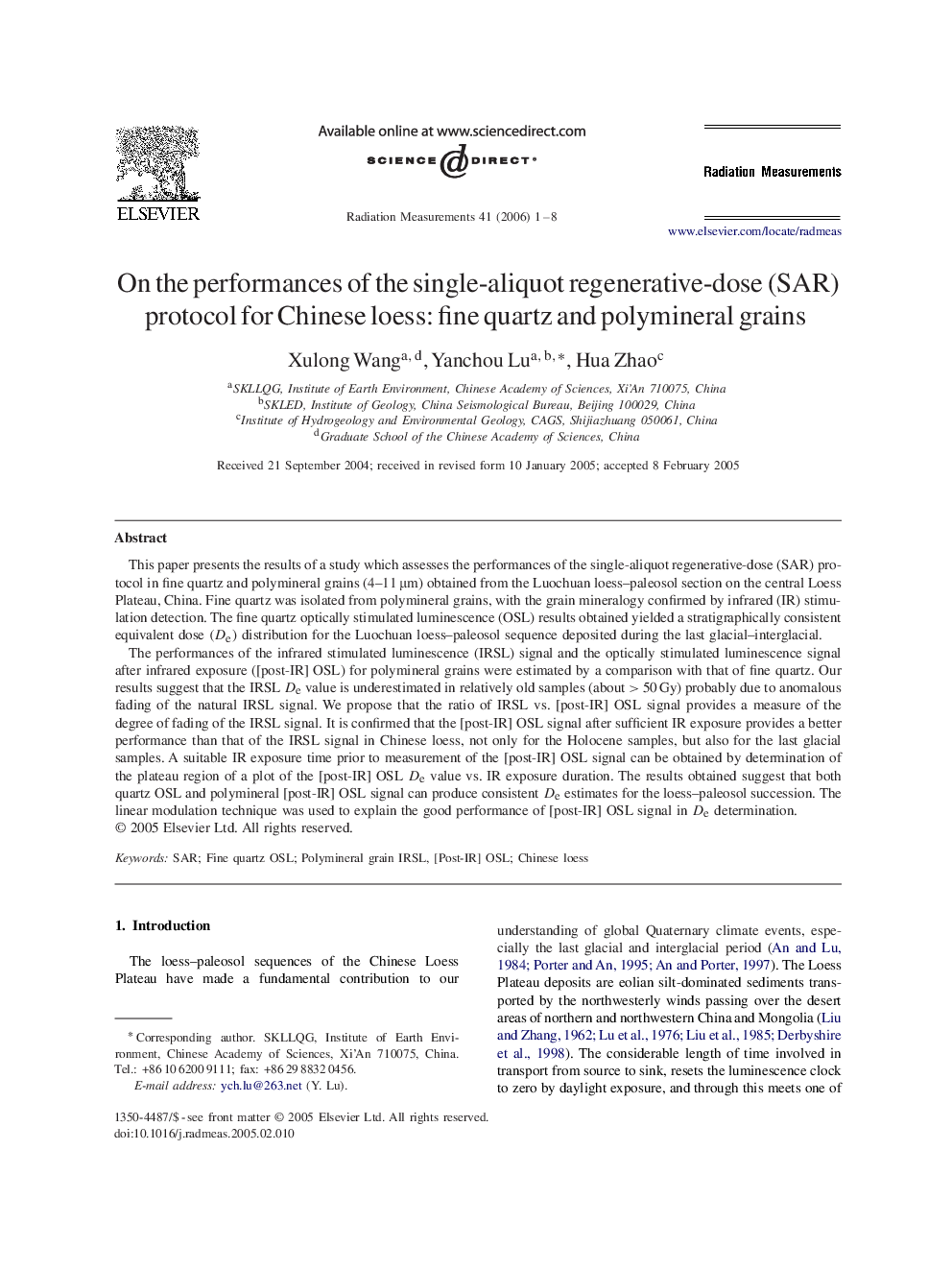| Article ID | Journal | Published Year | Pages | File Type |
|---|---|---|---|---|
| 1884736 | Radiation Measurements | 2006 | 8 Pages |
Abstract
The performances of the infrared stimulated luminescence (IRSL) signal and the optically stimulated luminescence signal after infrared exposure ([post-IR] OSL) for polymineral grains were estimated by a comparison with that of fine quartz. Our results suggest that the IRSL De value is underestimated in relatively old samples (about >50Gy) probably due to anomalous fading of the natural IRSL signal. We propose that the ratio of IRSL vs. [post-IR] OSL signal provides a measure of the degree of fading of the IRSL signal. It is confirmed that the [post-IR] OSL signal after sufficient IR exposure provides a better performance than that of the IRSL signal in Chinese loess, not only for the Holocene samples, but also for the last glacial samples. A suitable IR exposure time prior to measurement of the [post-IR] OSL signal can be obtained by determination of the plateau region of a plot of the [post-IR] OSL De value vs. IR exposure duration. The results obtained suggest that both quartz OSL and polymineral [post-IR] OSL signal can produce consistent De estimates for the loess-paleosol succession. The linear modulation technique was used to explain the good performance of [post-IR] OSL signal in De determination.
Keywords
Related Topics
Physical Sciences and Engineering
Physics and Astronomy
Radiation
Authors
Xulong Wang, Yanchou Lu, Hua Zhao,
